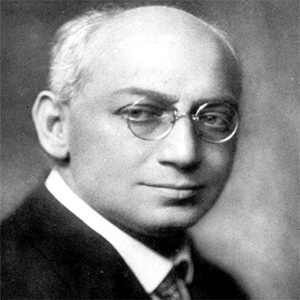Sandor Ferenczi’s concept of the dialogue of unconsciouses: a clinical example

Submitted: August 1, 2022
Accepted: April 17, 2023
Published: May 2, 2023
Accepted: April 17, 2023
Abstract Views: 1032
PDF: 260
HTML: 43
HTML: 43
Publisher's note
All claims expressed in this article are solely those of the authors and do not necessarily represent those of their affiliated organizations, or those of the publisher, the editors and the reviewers. Any product that may be evaluated in this article or claim that may be made by its manufacturer is not guaranteed or endorsed by the publisher.
All claims expressed in this article are solely those of the authors and do not necessarily represent those of their affiliated organizations, or those of the publisher, the editors and the reviewers. Any product that may be evaluated in this article or claim that may be made by its manufacturer is not guaranteed or endorsed by the publisher.
Similar Articles
- Olga MarÃa Fernandez, Mariane Krause, Janet Carola Pérez, Therapeutic alliance in the initial phase of psychotherapy with adolescents: different perspectives and their association with therapeutic outcomes , Research in Psychotherapy: Psychopathology, Process and Outcome: Vol. 19 No. 1 (2016): Special issue on Qualitative and Quantitative Research in Child and Adolescent Psychotherapy: part 2
- Cristina Marogna, Floriana Caccamo, Analysis of the Process in Brief Psychotherapy Group: The Role of Therapeutic Factors , Research in Psychotherapy: Psychopathology, Process and Outcome: Vol. 17 No. 1 (2014)
- Peter Muntigl, Naomi Knight, Adam O. Horvath, Ashley Watkins, Client Attitudinal Stance and Therapist-Client Affiliation: A View from Grammar and Social Interaction , Research in Psychotherapy: Psychopathology, Process and Outcome: Vol. 15 No. 2 (2012)
- Marcia Olhaberry, Marìa José Leòn, Magdalena Seguel, Constanza Mena, Video-feedback intervention in mother-baby dyads with depressive symptomatology and relationship difficulties , Research in Psychotherapy: Psychopathology, Process and Outcome: Vol. 18 No. 2 (2015): Special issue on Qualitative and Quantitative Research in Child and Adolescent Psychotherapy: part 1
- Jeremy Jinkerson, Audrey Masilla, Raymond C. Hawkins, Can MBTI Dimensions Predict Therapy Outcome: Differences in the Thinking-Feeling Function Pair in CBT , Research in Psychotherapy: Psychopathology, Process and Outcome: Vol. 18 No. 1 (2015)
- Sophie Hauschild, Lea A. Kasper, Anna Berning, Svenja Taubner, The relationship between epistemic stance, mentalizing, paranoid distress and conspiracy mentality: an empirical investigation , Research in Psychotherapy: Psychopathology, Process and Outcome: Vol. 26 No. 3 (2023)
- Rachele Mariani, Alessandra De Coro, Study of a Short-term Treatment by Referential Activity Linguistic Measures , Research in Psychotherapy: Psychopathology, Process and Outcome: Vol. 16 No. 1 (2013)
- Paula Dagnino, Mariane Krause, Carola Pérez, Nelson Valdès, Alemka Tomicic, The Evolution of Communicative Intentions During Change Episodes and Throughout the Therapeutic Process , Research in Psychotherapy: Psychopathology, Process and Outcome: Vol. 15 No. 2 (2012)
- Lindsey Myers, Howard Steele, Miriam Steele, Anne Murphy, Exploring maternal reflective functioning as a predictor of mother-child dyadic behaviour over time in a clinical context , Research in Psychotherapy: Psychopathology, Process and Outcome: Vol. 25 No. 1 (2022)
- Salvatore Gullo, Ilaria Misici, Arianna Teti, Michele Liuzzi, Enrico Chiara, Going through the lockdown: a longitudinal study on the psychological consequences of the coronavirus pandemic , Research in Psychotherapy: Psychopathology, Process and Outcome: Vol. 23 No. 3 (2020)
<< < 13 14 15 16 17 18 19 20 21 22 > >>
You may also start an advanced similarity search for this article.

 https://doi.org/10.4081/ripppo.2023.655
https://doi.org/10.4081/ripppo.2023.655





